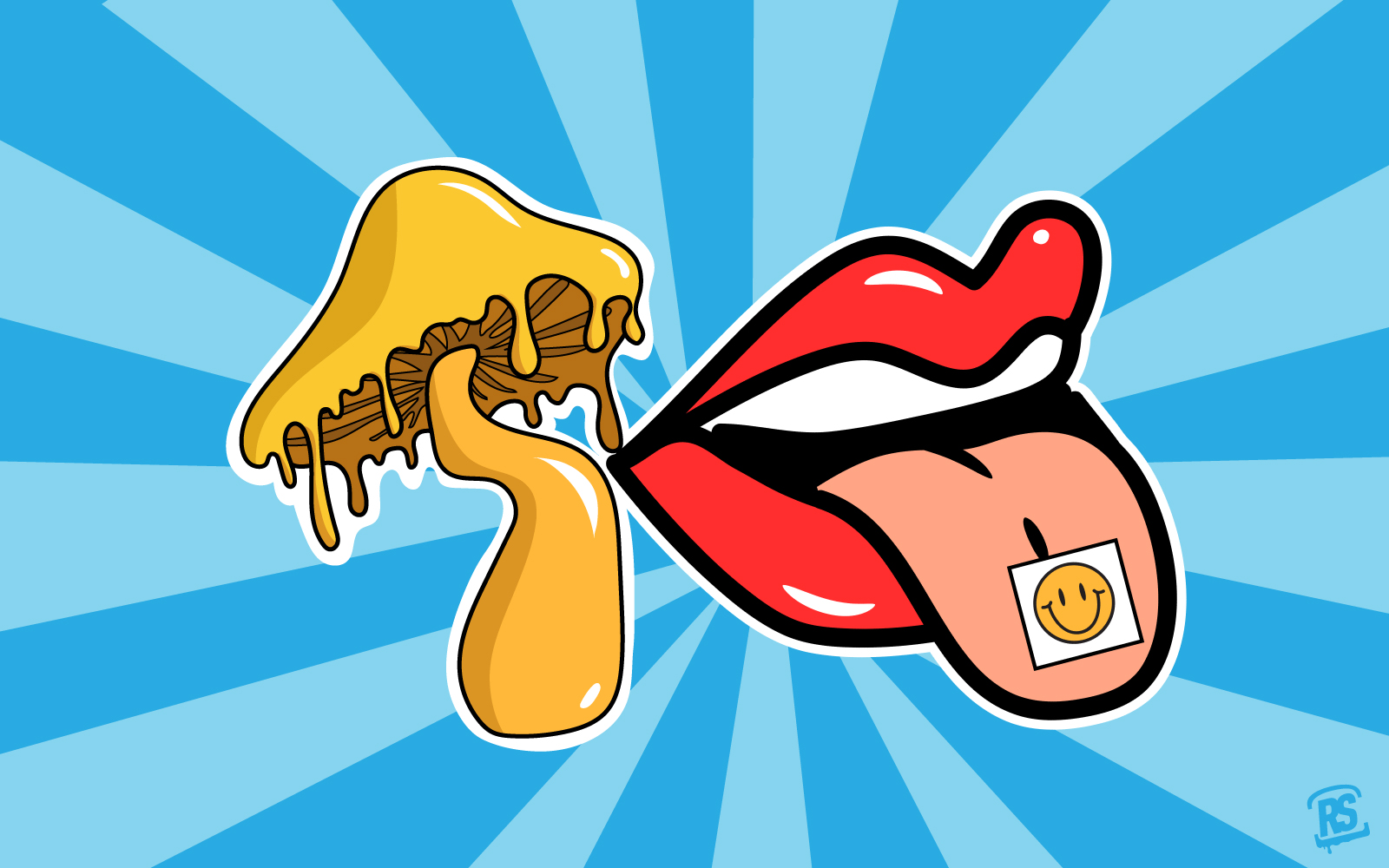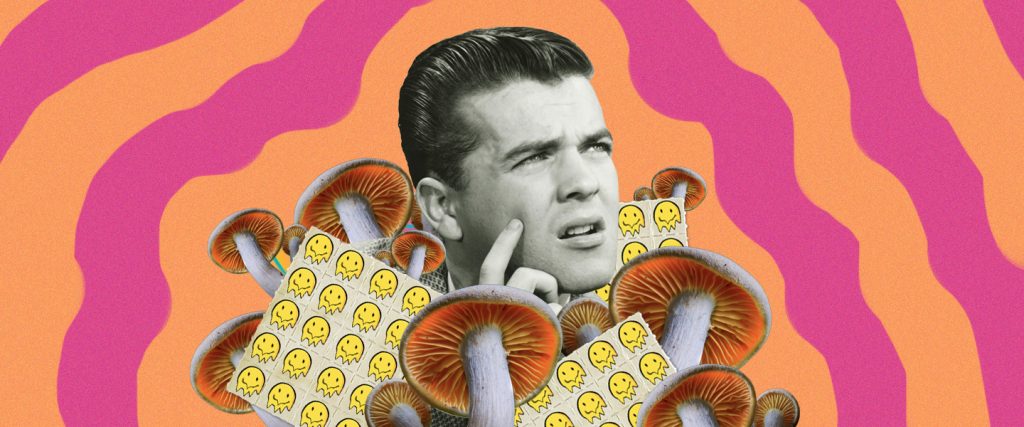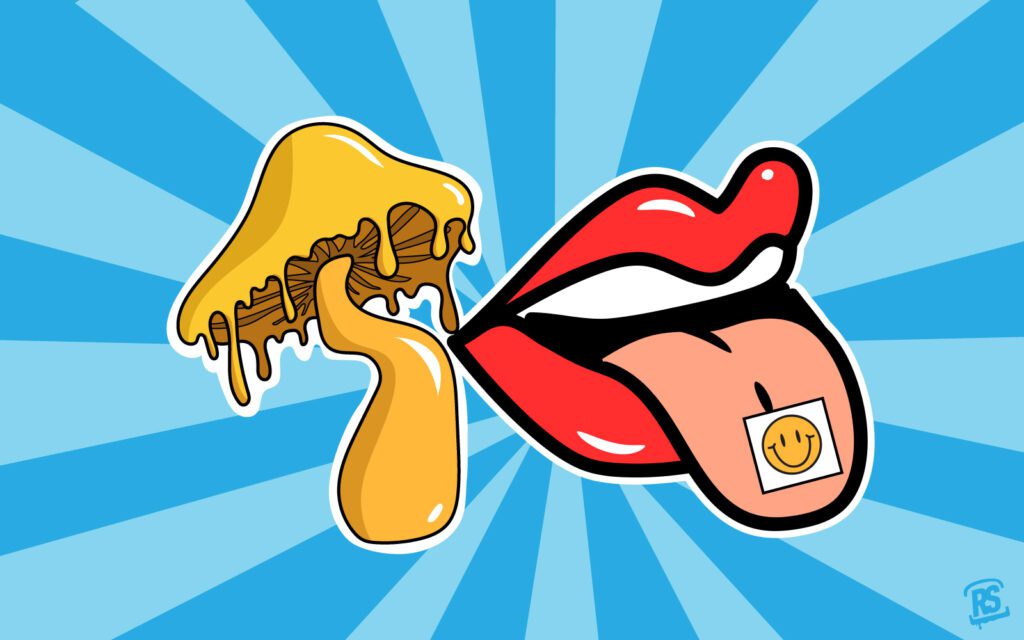
jjjjj
What is a Psychedelic
A specific category of hallucinogenic known as “psychedelics” are responsible for “non-ordinary states of consciousness”—a duller term for “trips.” They accomplish this through a process known as “serotonin receptor agonism,” which is basically what we term when a chemical compound can mimic the actions of serotonin, which is naturally produced in the body. Your 5-HT1 through 5-HT7 serotonin receptors are divided into 7 groups.
These kinds each have different subtypes that are denoted by the letters A, B, C, etc. The 5-HT2A receptors are uniquely capable of binding with psychedelics like psilocybin and LSD. Although the molecular basis for this is known, the particular mechanisms by which psychedelics can cause changes in cognition, mood, behavior, and personality are yet unknown.
One aspect of psychedelic substances that does appear to be universal is that they all appear to lessen activity in the human brain’s so-called default mode network. This area of the brain is well recognized for being active while a person is not paying attention to things happening in the outer world.
It is frequently activated during cognitive planning phases, during daydreaming, and other moments when a person is thinking about others, oneself, recalling the past, and making plans for the future. One of the main effects of psychedelics is assumed to be a decrease in default mode network activity, which has effects akin to those seen during meditation, mystical experiences, and near-death experiences.
What is Psilocybin?
The main hallucinogenic component of psilocybin, which is present in more than 200 different strains of these mushrooms and whose use predates written human history, is discovered in psilocybin mushrooms. Technically speaking, psilocybin is a chemical that, while not psychologically active on its own, is transformed by the body into a pharmacologically active substance. In this instance, psilocybin is broken down by human digestion into psilocin; hence, when we speak to psilocybin as a serotonin agonist, we are actually referring to psilocin, the end result of psilocybin metabolism.
When eaten, it quickly dephosphorylates and transforms into psilocin. Psilocin has a modest affinity for the 5-HT1A, 5HT1D, and 5-HT2C receptors and a high affinity for the 5-HT2A receptors. Although some have speculated that less predictable interactions with the other receptors may be to blame for varying reports of levels of anxiety, mood, and nausea, it is believed that much of what one views to be the “psychedelic experience” is a result of 5-HT2A agonism.
It’s also important to note that psilocin has no discernible impact on the body’s dopaminergic system, which means that taking psilocybin alone has little effect on the amount of dopamine the body produces. Later, more on dopamine.
Also “magic mushrooms,” contain a variety of additional potentially psychoactive substances in addition to psilocybin and psilocin.
Baeocystin has been identified from psilocybin mushrooms and is an analog of psilocin. It functions similarly to psilocin, albeit not exactly, Other examples of freshly isolated and discovered chemicals whose reality is still being revealed are norpsilocin and norbaeocystin.
Phenethylamine is a notable hallucinogenic substance also present in magic mushrooms. A natural monoamine alkaloid called phenethylamine acts as a central nervous system stimulant by controlling monoamine transmission.

hhhhhhhhh
What is LSD?
Lysergic acid diethylamide, also referred to as “acid,” are psychedelic substances that were first created on November 16, 1938 in Basel, Switzerland, by Swiss chemist Albert Hoffman. Lysergic acid, a substance generated from ergotamine, an enzyme found in the ergot fungus that grows on rye and other cereals, was used to make it. LSD was made by chance, like many other incredible scientific discoveries. Hoffman initially became aware of LSD’s amazing effects when he unintentionally ingested some of it through his skin. Hoffman later purposefully administered 250g of LSD to himself on April 16, 1943, before going on a bike ride. He was obviously completely taken aback by the encounter and knew he had… something.
LSD has a chemical structure that makes it both a seretogenic agonist (like psilocybin) and a dopaminergic agonist. This indicates that it has the ability to mimic dopamine and serotonin. This distinguishes it from most other psychedelics since only a small number of substances have both seretogenic and dopaminergic properties.
Numerous serotonin receptors, including 5-HT2A, 5-HT2B, and 5-HT2C, are susceptible to LSD’s effects. Additionally, there is an intriguing distinction in how LSD and other psychedelics affect serotonin receptors. The serotonin receptors collapse in on themselves when the LSD molecule binds to them. This indicates that the LSD molecule is capable of detaching and that it stays in place until the lid “pops off.” As a result, compared to most other psychedelic substances you might try, the LSD trip is a much longer experience.
The second key factor in how LSD affects the brain is the dopamine system and D2 receptors. Dopamine is a neurotransmitter that has a significant impact on our ability to enjoy pleasure, create and accomplish objectives, maintain focus, and inspire ourselves. Numerous widely used substances, including cocaine, MDMA, and methamphetamine, have the “dopamine reuptake inhibitor” effect. Dopamine concentrations in those routes are basically boosted by preventing dopamine from being reabsorbed into synaptic neurons after it has been released into those pathways in the brain.
So What’s the Difference?

jjjjjjjjjjjjjjjj
The following differences stand out as the most significant ones:
1. Magic LSD is made in a laboratory, while mushrooms are grown organically.
LSD is being produced in the lab today, despite the fact that it was first discovered in rye fungus. The most significant implication of this is that when you take LSD, you are taking a single concentrated molecule. When you consume mushrooms, you are actually ingesting a full fungus, of which just 1% to 2% is made up of psilocybin and psilocin. The other 98% is primarily non-psychoactive.
2. Psilocin only activates serotonin receptors, but LSD can impact both dopamine and serotonin receptors.
Serotonin receptor agonism is frequently linked to psychedelic substances, it is likely that dopamine receptor agonism also contributes significantly to the more energizing high that is frequently associated with LSD as opposed to psilocybin.
3. Although both have strong synergistic interactions with 5-HT2A receptors, the other serotonin receptors they influence are slightly different.
Psychedelic substances are frequently believed to be caused by 5-HT2A receptor agonism, but the various serotonin receptors that are activated by the various chemicals may contribute to the variety of effects.
4. LSD has a substantially longer half-life.
This brings up the peculiar “wastebin” effect that the LSD molecule performs when it binds to the serotonin receptor. When the LSD molecule binds to the serotonin receptor, it forms a kind of lid that keeps the LSD molecule in place for up to 20 hours, whereas the psilocin molecule almost always decouples after 4-6 hours.




